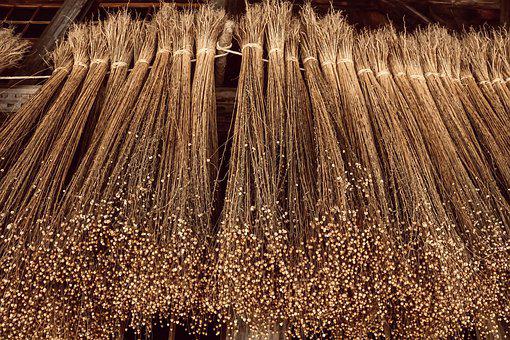Table of Contents
What is a flax fiber?
Flax is a natural bast fiber. These fibers come from the strew of an annual plant. Basically, Linum usitatissium grows in many temperate and subtropical regions of the world. Additionally, in the inner bark of this plant, there are long slender, thick-walled cells of which the fibers stands are composed.

Process Flow Chart of Flax Cultivation
Flax fiber is generally cultivated in the hot region of the world. Like all the fiber cultivation processes, it has a cultivating flow chart. The following is the process flow of flax cultivation. They are-
Land preparation
↓
Seed sown
↓
Plant grows
↓
Harvesting
↓
Retting
↓
Breaking
↓
Scutching
↓
Hacking
↓
Flax fibers (line and tow)
Now, I like to give a short description of the flax cultivating process.
Types of Flax Ratting
After harvesting, the flax fibers are held together in the stems by woody matter and cellular tissue. Ratting is a fermentation process that frees the fibers from the woody matter. Ratting may be carried out in one of the several methods.
- Dam Ratting
- Dew Ratting
- Tank Ratting
- Chemical Rating (caustic soda, soap, and dilute mineral)
Breaking
The rolled flax is drawn between fluted rollers in the breaking machine; this process is known as breaking.
Scutching
The broken flax materials are then subjected to a process that separates the unwanted woody matter from the fiber. This is done by beating the retted flax with blunt wooden or metal blades.
Hacking
After scutching, the flax fibers are usually combed or hacked by drawing them through sets of pins. Each successive set is finer than the previous one.
Line
The long fibers of flax are known as lines.
Tow
The shorter fibers of flax are also known as tow.
In sum, flax is a textile fiber and its cultivation process is near similar to jute fiber.






1 comment
Md. Fakhrul Islam Yeasin
Very Fine